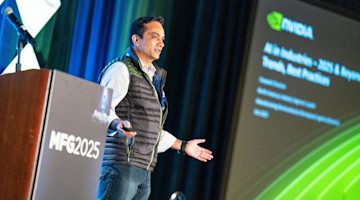“The windshield is bigger than the rearview mirror for a reason.”
– Jelly Roll
1. Machining.edu
Bridgerland Technical College addresses the skilled labor shortage in manufacturing by focusing on practical demonstrations and projects to attract and train students. The college engages middle and high schoolers through hands-on demonstrations using a Pocket NC mill to showcase CNC machining. The school’s Machining Technology program, bolstered by a $500,000 National Science Foundation grant, offers extensive training with CNC machines and CAD/CAM software.
2. Direct Ink Writing
A new 3D printing technique integrates electronics into flexible, stretchable microfluidic devices. The method overcomes the limitations of soft lithography, which requires clean rooms, through direct ink writing. By injecting liquid metal into multilayered microchannels containing embedded electronic components, Singapore University of Technology and Design researchers built wearable RFID tags and wireless devices. This has potential in automation, flexible PCBs, wearable sensors, and 3D tissue engineering.
3. 'I Am Titanium'
Rule of thumb: If your titanium doesn't come from Japan, it's probably not legit. Sure, there are good metal companies in all countries, but there are different levels of risks. Cutlery and jewelry may use titanium from Russia, but CAGE contractors (L3, Elbit, Trijicon, Aimpoint, EOTech, etc.) with in-service NSNs wouldn't be caught dead sourcing their titanium from outside Japan for the ruggedization of fragile optical systems. Seems odd, if not sketchy, that aerospace would deviate.
4. AI vs. Human Conversations
UC San Diego conducted a Turing test to see if people could distinguish between humans and AI in five-minute chat conversations. The study found that the GPT-4 model passed for a human in half the interactions, while real humans successfully passed two-thirds of the time. This suggests that as AI becomes more sophisticated, people will struggle to discern the difference, raising concerns about AI's potential use in fraud and misinformation. I’ll be worried when an LLM can talk like the youths of today ONG frfr.
5. Green Z
With strong, eco-friendly ambitions, Gen Z is eager to gain the "green skills" necessary for tackling climate change. LinkedIn found that only one in 20 zoomers and one in eight overall workers currently possess these green skills. But by 2030, a significant portion of the workforce can be equipped if businesses and policymakers focus on targeted training and skills development. By prioritizing skills training and entry-level green jobs, we can empower Gen Z to lead the green transition and ensure climate progress.
To get the latest tech developments delivered directly to your inbox, subscribe to the weekly Tech Report here.
To access Tech Trends, log in to or register for an MTInsight account at https://www.mtinsight.org/






